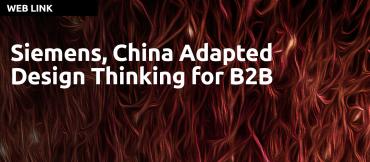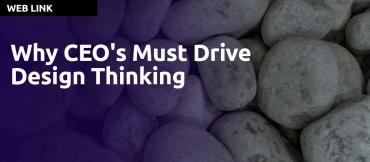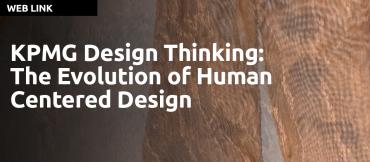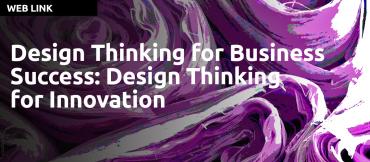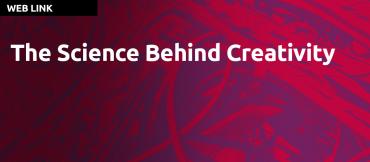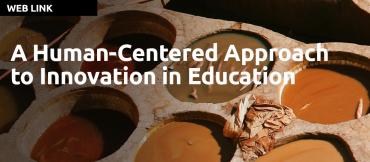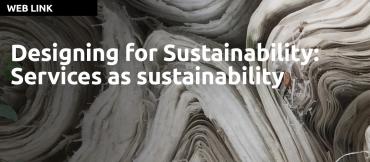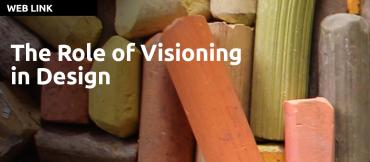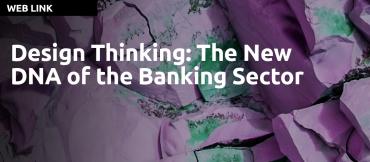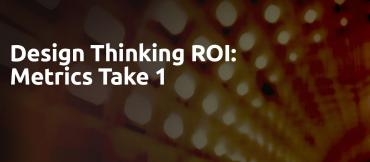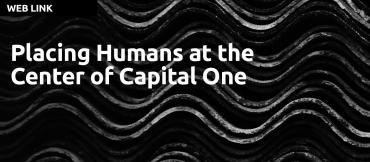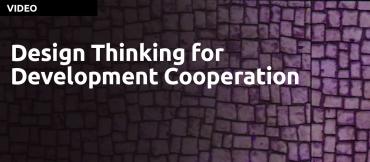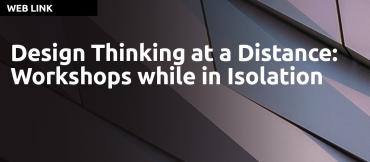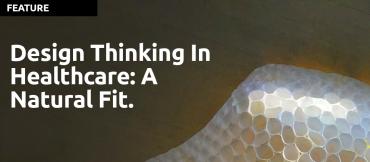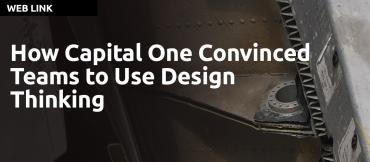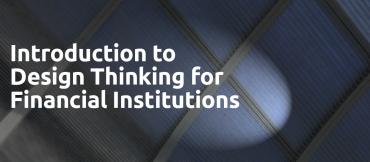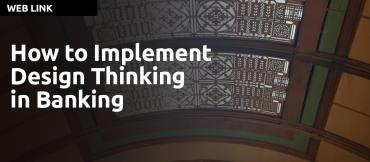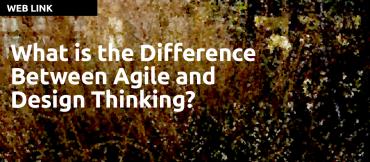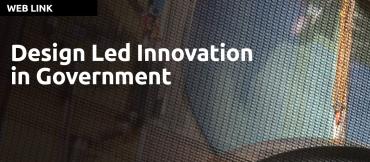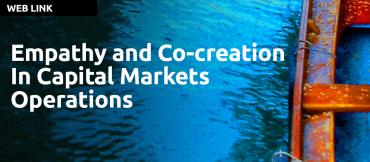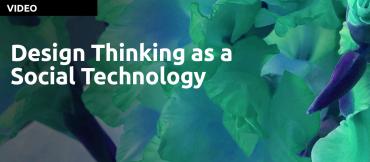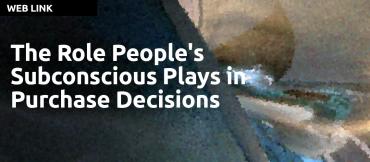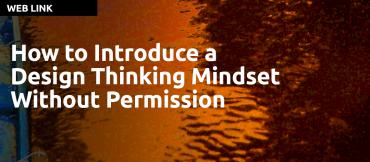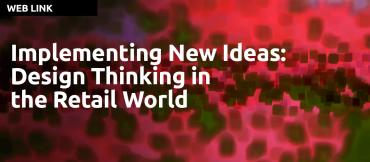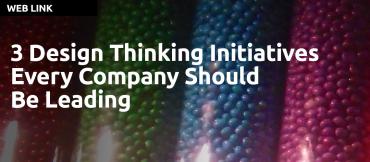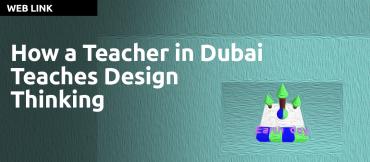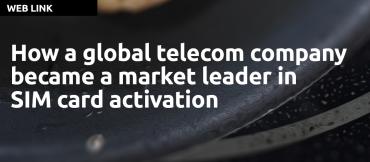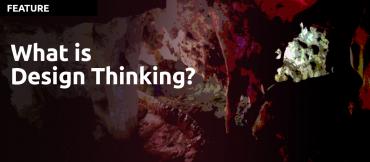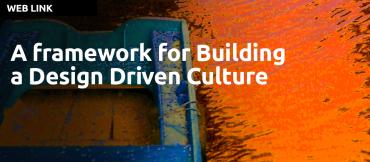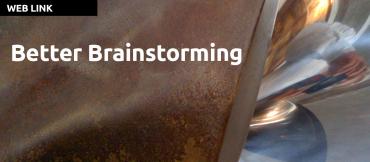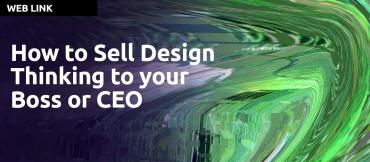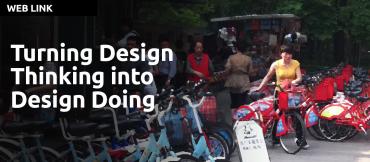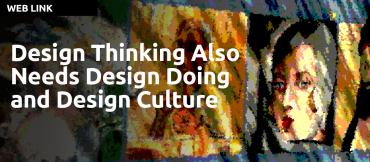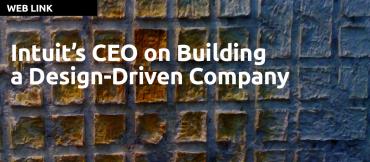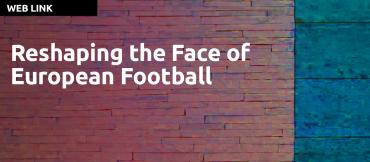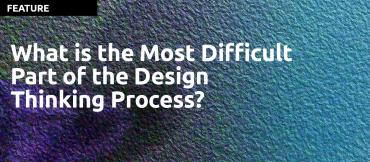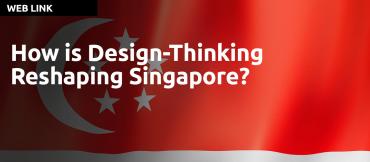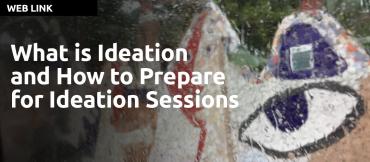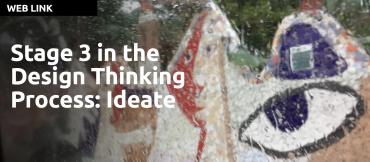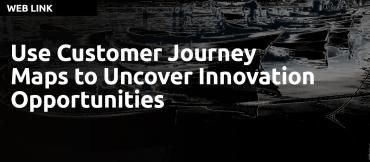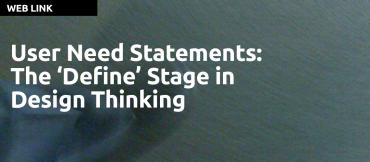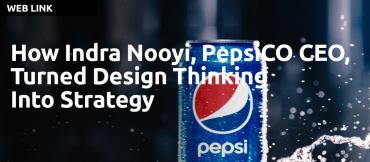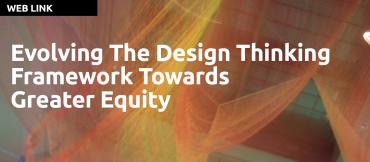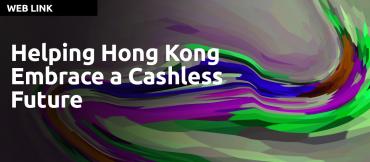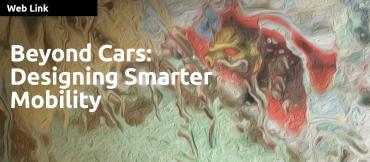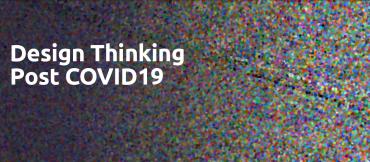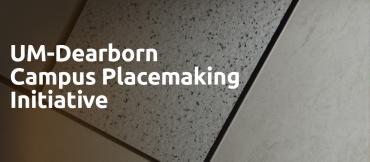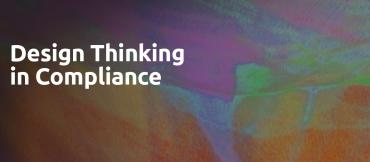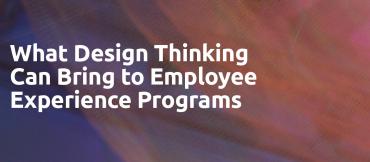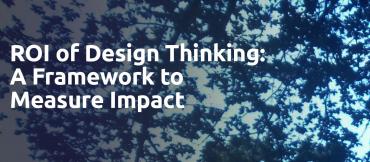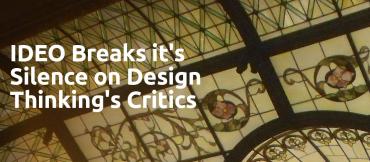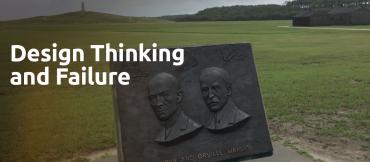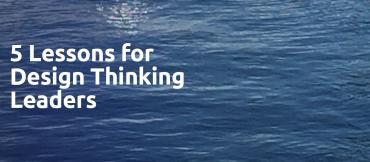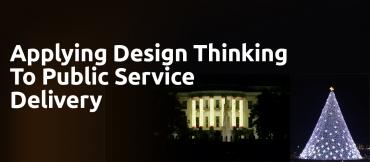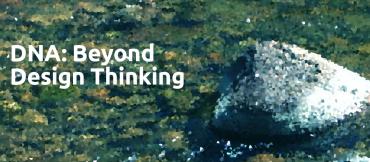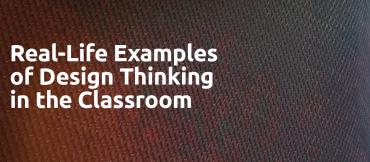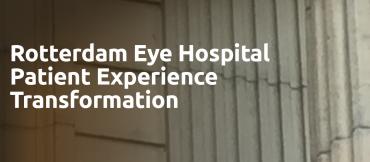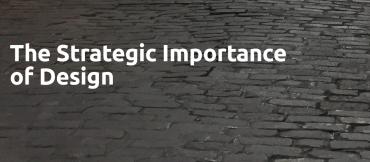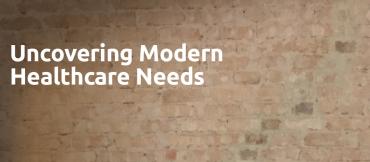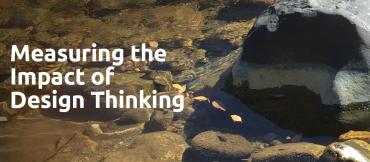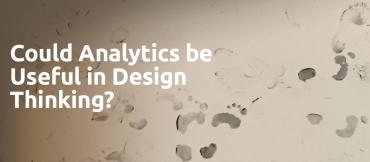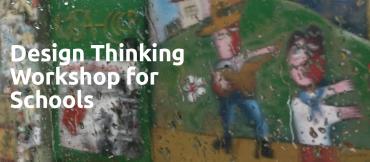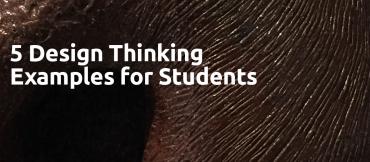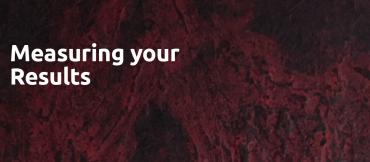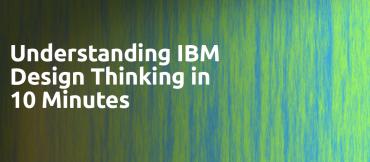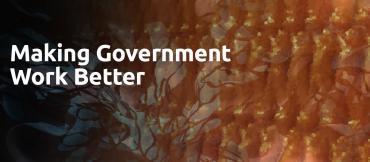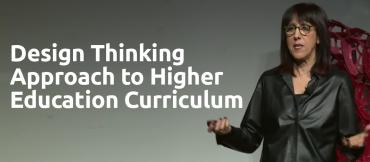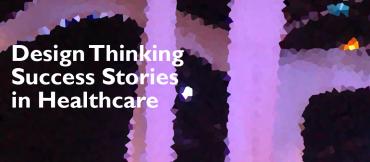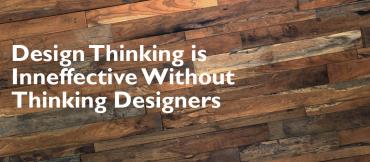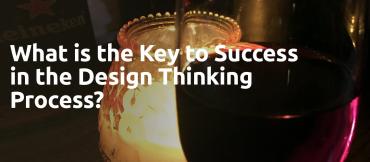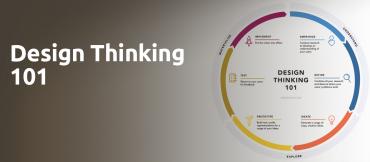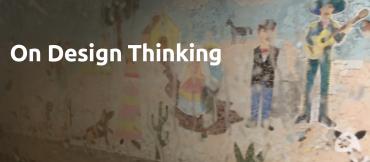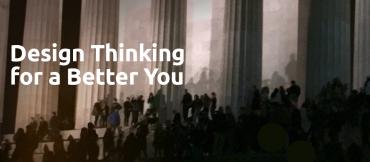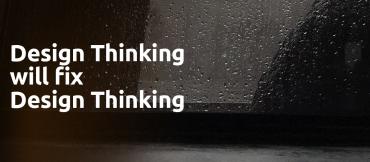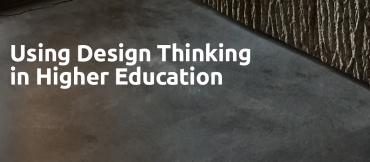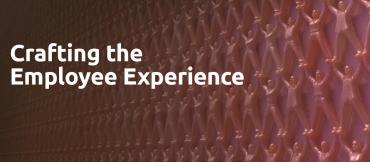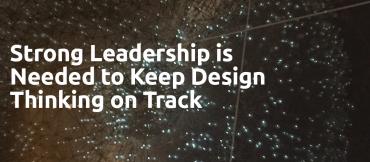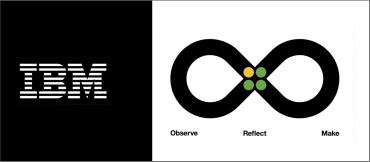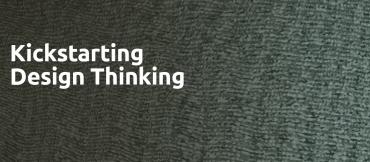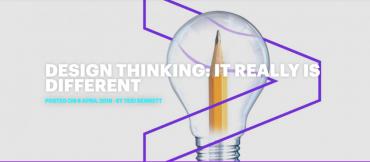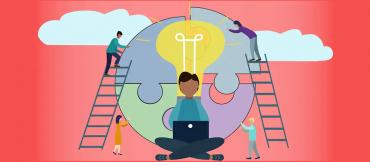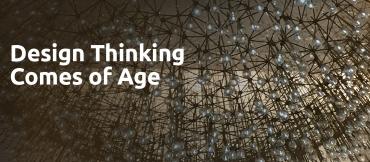
There are many great Design Thinking articles on the internet. Google lists over 1.48 billion Design Thinking articles.
On this Design Thinking Articles page we have curated a selection of articles that highlight ways of working, challenges in integrating design thinking in your corporation or firm and ideas that help you to become more effective at the practice of design thinking.
There are many claims of success in Design Thinking articles on the web, in this listing we have looked carefully for real evidence of the use of the Design Thinking process to arrive at solutions. Design Thinking is not the only way to find solutions to problems. Highly skilled innovators absorb the methodology of the Design Thinking process but add their finely honed skills and intuition as well as their powers of observation to generate successful ideas, products, services and experiences.
The design Thinking articles in this section are sorted by date. Use the tags at the bottom of each article to further refine your search. View Design Thinking articles and other content on the Design Thinking Association website for your particular industry in the Vertical Markets Index.
The innovation challenges for a foreign business-to-business company in China are huge. It has to quickly respond to the diverse and rapidly changing customer needs in the large emerging market, while facing strong competition from both local newcomers with disruptive threats and other established global players. To build up its innovation capability, Siemens Corporate Technology China has developed a practical innovation methodology adapted from Design Thinking and integrated with the best practices of other user-driven approaches, to adjust to both China’s and industry requirements.
Perhaps it is just the times we live in, or the instant gratification we get from social media platforms and thousands of news and information resources on the web, but it does seem that many people have the expectation that Design Thinking will turn them and their company into instant innovation guru's in a very short time with little to no effort.
Wrong.
This is a follow on article to our original article "5 Design Thinking Examples for Students".
-
Redesigning the Classroom Layout: Design thinking can be used to reimagine the physical layout of a classroom to optimize the learning environment. Students can collaborate, conduct research, and brainstorm ideas on how to rearrange desks, create flexible seating options, or incorporate interactive technology to enhance engagement and foster a more conducive learning atmosphere.
"Companies that have placed design at the center of the organization perform better. It allows an organization to differentiate, fend off competitors, and charge a premium. The CEO can bring design into the center of the organization by elevating the role, quite simply, and by asking some questions: What is the title of our most senior designer? How often do we talk to our customers? Do we empathize with them? Do we understand their pain points? Are we creating solutions that address those pain points? If the answer to all of those is yes, it’s quite likely that you’re doing a good job with design in your organization." McKinsey Article.
Michael Hendrix of IDEO addresses the issues he sees in how Corporations are implementing Design Thinking. At last. IDEO promoted the idea (correctly) that Design is fun and playful and that everyone can contribute creatively. All correct. However, one thing was missing from the story. Design and Design Thinking takes skill, the right culture and the right mindset to create great results. Just going through the motions of a 5 or 6 step process will not achieve great results. As is the case with any other activity performed at a high level to be fair.
Design problems are complex – thus delivering solutions for those problems can also be complex. Design thinking helps remove organizational silos and thus drives a culture of collaboration and experimentation. This paper intends to provide readers an insight into Design thinking and its evolution, and to explain why it should be of utmost priority to both established and new age organizations as well as why it is here to stay and rapidly evolving.
Design Thinking helps businesses to create user-centric products and services by discovering insights into user needs, applying these insights to their business model and generating innovative ideas.
In this five-part series, Sarah Dickins gives advice on how Design Thinking techniques can help you to orientate your product development around user need.
21st Century Learning and Innovation Skills are the skills that will be essential for students to possess to thrive in the increasingly complex life and work environments in the 21st century. These include:
• Creativity and Innovation
• Critical Thinking and Problem Solving
• Communication
• Collaboration
"Transformations from one paradigm to another are always difficult and complex. It takes you out of your comfort zone. It changes the vocabulary of your organization. It changes how you think.
It changes the power structures, because you can no longer come up with top-down solutions. You have to create totally new ways of working and develop new business models to distribute value.
It is a gradual journey for a company to find its focus.
If you look at the companies and organizations that are really preparing themselves for the future today, you will see that they are focusing on the Transformation Paradigm: going from the industrial through the experience, to knowledge to the transformational economy" said Reon Brand of Philips.
What, exactly, is creativity?
Psychologists and neuroscientists are uncovering new details about what it means to be creative and how to nurture that skill. “Creativity is of incredible real-world value,” said John Kounios, PhD, an experimental psychologist who studies creativity and insight at Drexel University in Philadelphia.
Creativity looks different from person to person. And even within one brain, there are different routes to a creative spark, Kounios explained. Which pathway a person uses might depend, in part, on their expertise.
Netflix Design Thinking? You bet! Within the past decade, there isn’t a better example of a business that has pivoted on the basis of customer preferences, wants and needs than Netflix. And there’s no better example of a business that didn’t, than Netflix competitor Blockbuster.
Do you remember when you had to drive to Blockbuster to get the latest new releases on video or DVD? In its early days, Netflix was a service that delivered movies to customers direct to your doorstep by mail. That was an innovative model until cable companies started offering movies on-demand. Why would someone order from Netflix and wait a few days for a physical cassette when they could stream a movie right there and then?
Time for some Netflix Design Thinking?
Talk to any educator, parent, or policy maker and you will inevitably hear about the many problems that exist in education. It’s not for lack of trying—millions of people are working across the country to find new solutions for our schools. And yet we’re struggling to find new answers that make a real
difference.
Recently IDEO, the design and innovation firm where I work, collaborated with San Francisco Unified School District to develop a new vision for their food
system.
A recent reorganization at King County Metro had resulted in a new market innovation division, charged with expanding network reach and transportation options through employer partnerships, direct community engagement, and increased mobility and accessibility offerings. With an ambitious new charter and a number of new team members, it was important to set a collaborative tone and to get everyone working quickly and embracing iteration to fuel breakthrough innovation.
A key priority was to get the new team thinking about how it could better meet the needs of its customers.
Through these two examples – Panera Bread and the university – Dawn Ressel demonstrates how design thinking can be used at any scale, from minute to broad-sweeping. She states that the possibilities for design thinking in retail food sales are innumerable – from increasing sales of a particular product in retail or food services, to increasing category sales in a particular setting such as retail or institutional, to shifting the entire landscape of how humans eat.
After a few interviews, a surprising topic continued to surface: service design in its purest form is a sustainability method. It caused us to pause and reflect on how we work. In this post, which marks our first part in a sustainability series, we will share what parts of the practice reflect the hallmarks of sustainable design. One of the series goals is to demystify the "S" word and how we might actively incorporate these ideas into our practice.
The essence of the design process is to envision novel solutions in order to meet certain real or perceived needs and express a certain intention through novel interactions and relationships.While science tends to focus on how the world is and how it came to be — an essentially backward looking activity that may venture to predict the outcome of experiments based on abstract linear extrapolations from past observations — design tends to focus on how the world could be in the future and proposes feasible pathways to create such a future.
Design is essentially forward looking and positive.
Design Thinking (DT) is a methodology used by designers for solving complex problems and identifying suitable solutions for consumers or end-users. In simple words, this human-centered process of innovation emphasizes on what consumers would love to have and prevents organizations from making dicey instinctive bets by helping them understand what their potential customers really want.
Herein lies the power of design thinking to help change IT's approach to problem solving. It is not about the agile process being wrong, it is more about a different approach being needed to get to the right problem for agile to solve.
The banking industry has become increasingly concerned over the challenge that emerging fintech startups pose to banks’ traditional ways of doing business and the threat that they present to revenue streams. In response, many banks have created internal innovation labs to counter these risks. “Design thinking” has become an important tool in the effort and is being used to explore how banks can boost their growth by applying the approach in a rapidly changing environment and an era of de-banking.
Measuring the ROI of Design Thinking and developing a structure for metrics is still very much a work in progress. Two studies one from McKinsey and the other from Jeanne Liedtka of the Darden School of Management at the University of Virginia provide solid evidence that Design Thinking does make a significant difference to the outcomes of an organization whether you are measuring the hard (a successful product, service or experience)or soft (More efficiency, better alignment, a different level of conversation about what to make) results.
Capital One’s CEO felt a sense of urgency that all of his employees be trained on the fundamentals of human centered-design. But how might one introduce Human Centered Design to one of the largest retail banks in the USA?
Read how the Brooklyn, NY boutique agency, Of Course, helped Capital One to successfully introduce Design Thinking and along with it a human centered focus for the staff at Capital One.
Victoria Peters discusses the problem of development cooperation between Europe (or anywhere else in the developed world) and Africa. She describes how the developed nations have killed creativity in Africa and how Design Thinking is one (good) way to bring that back.
Victoria believes that Design Thinking can create engaged citizens and engaged economies. She believes that Design Thinking can really reshape development cooperation by:
In this article Chris Nodder tackles the challenge of running Design Thinking workshops where participants are working at a distance in COVID times.
"Remote workshops are hard. The artificial environment (unusual tools, low bandwidth) is off-putting. Participants might treat it as a training session or typical video conference, so they don’t give the process their full attention. As a result people’s contribution might not be as well thought through.
If you have an existing team who respect the facilitator, and who see remote work as “business as usual”, then it’s more likely that you can succeed. Online tools aren’t very good at helping a team form an interpersonal bond. The team should at least have met and bonded before they start working remotely.
Design thinking in Healthcare is an almost perfectly natural fit. On the front end of Healthcare are the nurses who are naturally empathic. A key approach necessary for successful design thinking. Their role is to intimately understand the needs and take care of the problems of their patients. Their daily approach to problem solving requires them to empathize with patients. This approach fits perfectly with the approach of design thinking in healthcare, which is to understand patients/users/customer needs before looking for solutions. However, often patients can't directly communicate their needs to the nursing staff, so nurses are trained to look for signs and use their intuition to gauge the needs of their patients.
The hottest Trend in Banking is the use of Design Thinking to transform banking services.
Most banks and credit unions don't take 'the human factor' into consideration when developing their products and services. But several financial institutions are starting to do just that, using proven business management strategies to foster greater creativity and innovation. This hot new trend in banking is called design thinking and it delivers a toolbox and way of thinking that can help banks break away from their internal process focus to start looking with fresh eyes at how their customers experience their products and services. A word of warning - what you discover may not be pretty!
Boeing employees have learned, from hard-won experience, innovation at the scale of aerospace requires functional groups to work together.
The concept is simple: bring the product and value-chain stakeholders together in a unified design process where products are developed together with the operations that will produce them. This will provide the flexible knowledge base for innovators to work toward achieving the best alternative outcomes for each respective area; ultimately bypassing costly post-production changes.
Why the Financial Services Sector Should Embrace Design Thinking. Financial institutions need to evolve rapidly or risk disruption at the hands of nimble Fintech start-up companies.
In this article Kunal Vaed, The Street, describes how E*Trade used design thinking to enable the company to help investors get smarter by going from the idea of investing to an investment in 5 minutes.
E*Trade's Adaptive Portfolio service offering provides a good example of the work and results that E*Trade achieved with Design Thinking.
Joyce Liu, Associate Creative Director, frog, based in the Shanghai studio discusses frog's use of design thinking in retail and the need to be human centered, not just user centered in order to create really exceptional user experiences. She describes frog's work with BeautyFarm and JNBY to illustrate her point.
Scott Ellis of IBM discusses the use of design thinking in retail describing the methodology and application in a number of examples. He advocates for the necessity of using design thinking in retail in the changed world of digital user experiences that are all competing with physical retail.
Scott's insights into the use of design thinking in retail are useful and illuminating.
Listen to the full Podcast...
In this video Jakob Nielsen explains how the usability gap is the most serious issue that confronts the development of AI services. If you care about improving your customer journey/experience, then you have to ask
How might we make AI usable for people?
Clearly continuous improvement is not enough. You need breakthroughs in order to get ahead of the customer experience curve.
For any financial service provider, like MLP, customer proximity is the single most important aspect in daily business – especially as financial consultancy services require lots of trust. But with the hit of the financial crisis the perception of financial services changed drastically. For many people the financial sector is lacking transparency and being perceived as confusingly complex. As part of this development MLP had to acknowledge that also they had the task to explain their services and its USPs (Unique Selling Proposition) better.
If the one product you’re known for is ubiquitous, how can you stop your customers from leaving for other banks?
For Capital One, the answer was a small laboratory within the larger bank. The group leading this innovative push calls themselves Capital One Labs, and their secret weapon is free coffee.
Design Thinking has found many applications in the finance sector within financial institutions. It should not come as a surprise as financial institutions, like any other businesses, have to focus on the customer and their needs in order to succeed. They are also subject to the same disruption from digital technologies and the shift from physical to more virtual engagements with customers, faster ways of transacting, access to greater information and better investment tools that digital can offer.
There are many examples of design thinking in finance and financial institutions such as:
According to the UXDA (UX Digital Advantage), the finance industry has experienced a turbulent period of Fintech disruption in recent years. In fact, 75% of the finance sector companies surveyed by KPMG stated that changing customer needs is the key area where disruptive Fintech companies have been challenging the traditional finance businesses. Although customers' needs are the basis for any business, in today’s competitive and customer-centric landscape, businesses must understand the customer on a much deeper level to come up with more innovative solutions. It is at this point that Design Thinking in finance comes in.
The last year has presented us with the challenge of planning and conducting research and filmmaking remotely. This has been a good opportunity to open new conversations and invite fresh, diverse and, in some cases, untested expertise into our network. We wanted to write something for those wondering what is possible vis-a-vis a remote research approach. Below are some ideas and tools that we’ve been getting excited about.
Occasionally, a new way of organizing work leads to extraordinary improvements. Total quality management did that in manufacturing in the 1980s by combining a set of tools—kanban cards, quality circles, and so on—with the insight that people on the shop floor could do much higher level work than they usually were asked to. That blend of tools and insight, applied to a work process, can be thought of as a social technology...I have seen that another social technology, design thinking, has the potential to do for innovation exactly what TQM did for manufacturing: unleash people’s full creative energies, win their commitment, and radically improve processes.
Design Thinking is the best innovation method. And it is not even close! In the 2019 Alchemist Accelerator Survey, 46% of Executives voted Design Thinking as the the most effective method to support Innovation.
Agile is a method to solve predefined problems, while design thinking focuses on finding the right problems to solve.
Design thinking workshops teach you how to listen to customers and observe their behavior and this is the main reason why design thinking was voted the best framework for helping companies create innovative products — beating out agile, lean and other frameworks.
How do you systematically prototype, test, and scale up public sector policy and service responses to the challenges of Government? The Danish government’s innovation unit, MindLab, has taken on questions like this during the last decade to help rethink waste management in Copenhagen, to reducing tensions between inmates and guards in Danish prisons, to transforming services for mentally disabled adults in the city of Odense.
At the center of the room sat a new kind of prototype of a vehicle, which had been the focus of a startup-style development team made up of members of purchasing, HR, legal, design, accounting and more...
...This was just one of dozens of war-rooms now filling the buildings of Ford's Dearborn campus, and also in Ford’s campuses around the world. This new kind of problem solving and rapid prototyping were new to the greater Ford team. And while the IDEO team had been alongside Ford through many projects, we had not touched this prototype.
Government's role is to provide essential services for its people. Using the methodology and mindset of Design Thinking in government projects can help to clarify for whom, what problems need to be solved and test and improve the resultant ideas quickly before huge resources are applied to rolling out the new or improved government services.
Governments mandate is clear and so is the target customer: it's citizens. All of them.
The problems of government are complex, i.e. affordable healthcare for all, simple collection of taxation, etc, etc. The task becomes all that much more challenging when you add the inevitable and mostly ugly politics that comes with government work into the mix.
Affordable healthcare for all. Three components.
Co-creation and empathy are fundamental principles of design thinking that enable teams to collaborate and solve user problems at pace. Cross-functional collaboration and deep understanding of end-users help to break down barriers between organization silos, resulting in an aligned vision and more holistic, user-centered solutions. However, the geographically-dispersed nature of investment banks can make co-creation and empathy-building challenging.
Whether it is fintech, new regulations, or increasing customer demands, banks need to rethink the way they address wicked challenges related to designing and launching value-adding products and services that meet current and future customer needs. Design thinking has emerged as a highly effective and customer-centric method for solving these types of business problems.
It is based on observing customers in their natural environment, prototyping ideas, and validating them with real customers in an iterative way, working towards the best possible solution.
What is a Social Technology? Jeanne Liedtka presents her thoughts on Design Thinking as a Social Technology at the 2020 Global Design Thinking Alliance virtual conference.
More videos from Jeanne Liedtka
In a connected world, Design Thinking is more important than ever. We need a healthy mix of people to get involved in the innovation process. No single designer, or even team of designers, can ever hope to understand all the facets of a particular subject. Instead, we need insights from engineers, researchers and marketeers from inside the company, to name just a few, not to mention external partners and end users. Our role at Philips as designers is to orchestrate this process and connect the dots by empathizing with our customers and each person in the innovation team.
Claudia Kotchka introduced a process for P&G's people to look for opportunities by observing how consumers behave more broadly than it had in the past. Whereas, P&G had traditionally watched how consumers used its products; Kotchka taught P&G the importance of watching how consumers performed daily activities -- such as getting ready to go to work.
Ultimately, she helped P&G develop a process based on design thinking that helped reinvent the Olay brand.
Even more than other change-management processes, design thinking requires active and effective leadership to keep efforts on a path to success [because it employs ideas and thinking not normal in most businesses]. Much has been written, in HBR and elsewhere, about how organizations can use design thinking for innovation. This in-depth study of almost two dozen major projects within large private- and public-sector organizations in five countries suggests that effective leadership is critical to success.
In order to uncover the latent needs of people, it is necessary to understand the role of our subconscious in decision making. Once this is clear, it will become apparent why focus group research just won't deliver the insights you need. As humans, we are basically running on auto pilot. Unless you are observing the process of decision making, it is unlikely that you will find out how people behave when purchasing something.
There are only a few organizations where leadership is really strategic about the introduction and embedding of design/innovation capabilities. You don’t have to wait for top and middle management to deploy the ‘right’ conditions for you to innovate. All you need is to apply your creative energy to the systems and structures of your own organization and get a bit, umm … subversive.
A change in perspective can help businesses to implement new ideas and successfully complete ongoing processes. Design thinking is a customer-centric approach that can help in this endeavor.
“What do my customers really want?" It’s quite possibly the most important question every retailer must ask and be able to answer, whether it's a large company or a small convenience store at the corner.
Best Buy and IA Collaborative designed a new multi-channel customer experience for its smart home/home energy management department. Utilizing insights from customer observations and home immersions, IA designed the holistic experience crossing multiple consumer touch points—from in-store product and interactive experiences, education displays and animations, to a compelling solution guide with Dwell magazine.
By adopting an approach to digital innovation that is used by the world’s most successful consumer-facing companies, CMOs can turn customer satisfaction into a profit center.
With Design Thinking, smart digital technologies are merely the starting point. Human behavior and emotions are the priorities. The Design Thinking process is richly iterative, with experiments and continual revisions to challenge assumptions and redefine problems. It’s about discovering new solutions to improve the customer experience.
All around us, there is evidence of how design is shaping the future of business. Design isn’t purely about aesthetics or asking tactical questions – it’s about thinking systemically and answering big, complex and interdependent challenges. “Design thinking” has risen to prominence – and become an imperative in many companies – because things like disruptive growth, brand evangelism, and breaking into future markets are required for every company’s long-term survival.
But how do you achieve these complex and lofty goals?
Reham has been working at Mohammed bin Rashid school, a public school in Dubai, for the last five years as a Design & Technology Teacher. She teaches grades 3 to grade 8 students. Prior to working as a teacher, Reham was an architect and worked at an engineering consultancy where her duties included designing buildings using Autocad and 3d Max software.
In a world driven by the expansion of connectivity and smartphone sales, the demand for voice services and activation of SIM cards is still the norm. One large telecom operator noticed a high return and rejection rates on their pre-paid SIM cards, after the activation process, resulting in an annual deficit close to a million.
Through a design thinking project they were able to improve customer satisfaction by significantly reducing SIM card activation time by 80%.
Let’s be honest, a lot of people don’t trust lawyers. A lot.
Some believe this is because lawyers speak and write in ways that are calculated and self-serving. But the world is changing and lawyers need new skills to adapt to the current consumer-driven market. This perceived lack of trust between lawyers and clients could be reduced through empathy.
Designers solve problems for people. So what is design thinking? It is a methodology and a framework that helps people to use creativity to solve other people's problems regardless as to whether the problems are small or large.
Design Thinking is different to the methods used by other professions in that it is based on creativity, prototyping (failing fast and testing the solutions with end users early in the process) and a focus on understanding the needs of the user.
Many Design Thinkers face the challenge of how to position and sell Design Thinking within their executive team. They face a number of issues from CEO buy-in to resource allocation for design thinking activities. There are two basic strategies that can be used to get buy in from the team. The first is the Trojan horse method. Don't mention design thinking and try to avoid design thinking language. Instead, use the methodology and deliver results that make a difference. The second strategy is to consciously discuss it, position it and sell it to the executive team as a strategic decision for the corporation, up front before the process is well embedded and proven.
In our recent design thinking survey, one of the most difficult things respondents found about design thinking was integrating it into their corporations. When not supported from the CEO on down, design thinking is unlikely to create real change for a corporation and this manifests itself in many ways as we saw from the survey. Some of the top issues were executive buy-in, lack of time and resources to enable design thinking to have a really positive effect on a project.
Innovating through hackathons, bootcamps, brainstorming sessions, sprints and the like is a good start, creating a culture of innovation is what will set you apart. This has to do with leadership. It doesn’t mean that the leaders have all the good ideas, it means the leaders create the conditions in which creativity and innovation succeed. This article discusses a framework to help an innovative culture grow.
Even though brainstorming groups don’t generate more or better ideas (research proves this), brainstorming is arguably more democratic than the alternatives, so it can enhance buy-in and subsequent implementation of the ideas generated, regardless of the quality of those ideas.
Why do you brainstorm and what do you expect its role is in your project?
Brainstorming for questions rather than answers makes it easier to push past cognitive biases and venture into uncharted territory. We’ve seen this dynamic in academic studies—in social psychologist Adam Galinsky’s research on the power of reframing during times of transition, for instance. Yet lingering in a questioning mode doesn’t come naturally to most people, because we’re conditioned from an early age to just keep the answers coming.
The association asked respondents what they found the most difficult thing about Design Thinking in our July 2020 Survey. 11% of respondents replied that convincing their bosses/CEO/Executive Management was the most difficult thing. However, reading between the lines many other people responded that they did not have enough time and or resources to run the methodology successfully, leading us to believe that the actual number who had not managed to convince their seniors of the value of the process is actually more like 20%. The most responses, 42% where about integrating Design Thinking into a corporation's existing processes, which is really an effect rather than a root cause.
Learning Design Thinking requires both experiential and social learning. It is like learning to ride a bicycle, it is very much an experience of "doing" - experiential. You cannot learn how just by having someone explain it to you—you have to actually try to do it yourself to find your own balance. You also need to practice to get better.
You can also increase your understanding by observing and interacting with more advanced practitioners—in this way, it is social. You enhance your understanding by practicing with your peers, sharing perspectives, and giving each other feedback.
Mark Curtis is the co-founder of Fjord, a design and innovation consultancy that was acquired by Accenture in May 2013. Curtis and Fjord operate under the rule of three for design, which incorporates design thinking, design doing and design culture, which he explained at Inspirefest 2016.
One of the most common misconceptions about prototyping is that you do it after you’ve determined your product or service. But this assumption goes against the true value of prototyping itself!
Prototyping should be a core part of your entire project’s life cycle, allowing you to test opportunities earlier on and gain confidence that the project is headed in the right direction.
Service design includes all the intangible aspects of how an organization seeks to build a relationship over time with its customers. And one goal of prototyping these service design experiences is to bring tangibility to these intangible experiences. Prototyping is such a powerful tool because you're organizing your service around the needs of the end consumer. Prototyping is important for determining what lands correctly and what’s missing. It’s a way to depict how the experience might play out over time and to gather feedback around that.
prototyping is an incredibly effective way to make ideas tangible, to learn through making, and to quickly get key feedback from the people you’re designing for. Rapid testing with real users can help you identify concepts that have potential for impact and spot ways to improve on early ideas. Prototyping isn’t about being precious.
This article links too many other resources.
Here is a useful list of the eight most common prototyping methods, together with best practice tips that help you maximize your prototyping and testing sessions. By arming yourself with these eight common methods, you can begin your iterative process of building prototypes in order to empathize with your users, to decide on and refine your ideas and to test your solutions.
The 8 Most common prototyping methods are: Sketches and Diagrams, Paper Interfaces, Storyboards, Lego Prototypes, Role Playing, Physical Models, Wizard of Oz (faked) Prototyping and User Driven Prototypes.
Prototyping offers designers the opportunity to bring their ideas to life, test the practicability of the current design, and to potentially investigate how a sample of users think and feel about a product.
When designers want to determine and understand exactly how users will interact with a product, the most obvious method is to test how the users interact with the product. It would be foolhardy and pointless to produce a finished product for the users to test. Instead, designers can provide simple, scaled down versions of their products, which can then be used in order to observe, record, judge, and measure user performance levels based on specific elements, or the users’ general behavior, interactions, and reactions to the overall design.
The original version of Quicken offered only one-third the features that many competing products had, but with an important difference: It was well designed. Instead of looking like a spreadsheet, it displayed the familiar images of a check register and an individual check.
Because the design made using the product so intuitive, Quicken immediately became the market leader in personal finance software.
The total number of fans is the result of a club’s customer experience strategy...It’s up to every club, as a company, to constantly improve relationships with their clients and upgrade customer experience they’re delivering to them...Care for them and they’ll be extremely loyal. Well at least for some period of time...Our challenge was to improve frequency and engagement of the selected target groups for the clubs home matches.
The Harvard Business Review publishes many articles (7,557) on Design Thinking. It is after all gradually being recognized as a successful way to help companies to become more innovative and to make innovation more effective by focusing on users needs.
Here are some good articles?
The phenomenon of a sudden “a-ha” moment can be thought of as the result of crossing a threshold for cognitive reorganization. Before reaching the threshold, there is nothing in conscious awareness but once the dots all snap into place with a thread of unexpected connection to create a discernible pattern (where before there was none), there is a release of energy, often both relieving and joyful.
We recently sent out a survey to the Design Thinking community to understand how they perceived Design Thinking. One of the questions asked what they found to be the most difficult part of the Design Thinking Process.
Surprisingly the answers were not as varied as one might expect. In fact they were almost exclusively clustered into three areas: Integration into the existing business and its processes, Time and (re)Defining the Problem Statement.
From hospitals to housing, good design makes government better. It saves lives, cuts costs, and boosts social welfare.
GovInsider caught up with Jeffrey Ho – Executive Director of the DesignSingapore Council, part of the Ministry of Communication and Information – to find out how design-thinking has been used in Singapore.
OK, I take it back. Well, some of it anyway.
In June, 2010, I posted an essay on Core77 entitled Design Thinking: A Useful Myth. (Got a lot of responses, that one did.) Since my essay was posted, I keep encountering people who jump to solutions and who fail to question assumptions-- engineers, business people, and yes, designers (and design students). These encounters made me reconsider. I observed design students who were acting mindlessly, simply doing their assignments as presented. No creativity, no imagination, no questioning. That's not what design thinking is about. As a result, I have changed my mind: Design Thinking really is special.
Although many people might have experienced a “brainstorming” session before, it is not easy to facilitate a truly fruitful ideation session. In this article, we’ll teach you some processes and guidelines which will help you facilitate and prepare for productive, effective, innovative and fun ideation sessions.
Ideation is often the most exciting stage in a Design Thinking project, because during Ideation, the aim is to generate a large quantity of ideas that the team can then filter and cut down into the best, most practical or most innovative ones in order to inspire new and better design solutions and products.
In the Ideate stage, design thinkers spark off ideas — in the form of questions and solutions — through creative and curious activities such as Brainstorms and Worst Possible Idea. In this article, we’ll introduce you to some of the best Ideation methods and guidelines that help facilitate successful Ideate sessions and encourage active participation from members.
Venture design involves designing new ventures for startups and large companies looking for transformational growth beyond just a product or service. It means designing, testing, and launching all aspects of a new business including the brand, business model, products/services, user experience, and organization. Helping companies pursue a new customer with a completely new value proposition.
Read more...
One way to develop more empathy with—and gain new insights about—your customers is to look beyond the narrow definition of your offering and consider the customer’s total experience. The more broadly you define the customer experience, the more opportunities you can identify for improvement.
As you learn design thinking, you progress through stages: being a beginner, an intermediate practitioner, and possessing advanced expertise. This progression is like learning to cook: you won't be a master chef on day 1, but there are appropriate skills to aim for at each level.
The user need statement. What is it and why do you need to make one? In design thinking (as well as in any product-development process), it is important to define the problem you want to solve before spending time and resources on generating possible solutions. (A great solution to the wrong problem will fail.) Creating a user needs statement maximizes the use of resources and decreases the likelihood for friction and disagreement in the prototyping, testing, and implementation stages.
I’ve facilitated several ideation sessions with cross-functional teams. Participants usually experience a mix of emotions: excitement and openness, but also discomfort with ambiguity and uncertainty of the design process. Being a designer, the latter is not something I usually feel.
Recently, I ran an ideation session remotely. As it began to sink in that I would have to keep the team engaged on a video call for three long hours, I began to experience that discomfort...
A society’s progress depends upon the quality of the questions it asks itself and to know what questions to ask today in order to secure a sustainable future. This article contributes to the conversation about whether Design Thinking as generally described can deliver breakthrough disruptive ideas and solutions or whether a different type of Design Thinking approach is needed to achieve that sort of outcome.
The Emotion Archive comprises 800 comments from people about health, family, finances, work, and more. Comments were gathered over the course of several weeks during April and May of 2020. Some great visualizations to help your insights during these changing times.
Every day, what we knew as normal before coronavirus fades away, and we find ourselves in a transitional space where we cope with the crisis day by day and wonder what we’ll be doing whenever the next normal arrives.
As CEO, Nooyi visits a market every week to see what PepsiCo looks like on the shelves. She always ask herself—not as a CEO but as a mom—“What products really speak to me?” The shelves just seem more and more cluttered, so she thought they had to rethink their innovation process and design experiences for PepsiCo's consumers—from conception to what’s on the shelf.
This led to a 50% share price increase.
Read Mauro Porcini, PepsiCo's Chief Design Officer's insights here
We are not just in one crisis — we are in multiple crises at once. The last decades in environmental destruction, human rights abuses, social unrests, failing political systems, and overly-powerful corporations have proven that. There can be no doubt that the economic, political, and social systems we have in place today will not sustain us.
While a lot is happening on the leadership level... The world will not merely be changed by speeches and commitments but by everyone taking action and doing things differently.
An interviewed Tania Anaissie, the Founder and CEO of the social justice design firm Beytna Design and the co-creator of a new form of design thinking called Liberatory Design.
Liberatory Design combines the innovative potential of design thinking, the systemic lens of complexity theory, and the healing powers of equity practices to redesign how people work and live.
Walmart announced June 10 an expansion of its Live Better U education benefits program to include new programs that will help their learners adapt to the new world of work and any challenges they’ve faced as a result of the current state of the economy.
A partnership with eCornell and Southern New Hampshire University now allows Walmart associates to take 19 digital skill certificates that cover four different areas important for them and their career development: ways of working, data fluency and decision-making, design-thinking and UX/UI, and technology.
How design thinking’s user-centric approach is helping Hong Kong embrace a cashless future.
The world is rapidly moving towards a cash-lite society with the continuing global spread of the coronavirus disease, Covid-19, helping to accelerate the demand for digital payment services.
Many people have been not only adopting social distancing measures during the pandemic, but also trying to avoid contact with people through the use of bank notes and coins by choosing digital payment methods or shopping online. Except in Hong Kong...
Accenture (NYSE: ACN) has entered into an agreement to acquire INSITUM, a service design and strategic research firm focused on innovation through a human-centered approach. The acquisition will strengthen Accenture Interactive’s position as a leading Experience Agency in the region by expanding the world-class services of its design and innovation unit, Fjord, in Latin America and beyond.
Icebreakers can really help to create the right atmosphere for your design thinking sessions, lighten people up and open them to a fresh approach. They can also help introverts get comfortable with what’s to come. Ice breakers can take lots of forms. Here are some favorites.
Mattia Tamborini describes what he did in his Design Bootcamp project. He learned what NGO's lacked in competences and found out some of the challenges they faced, but ultimately helped them to become more effective. What he learned about NGO's will help all NGO's and associations to understand themselves better and make similar improvements.
Now that we have a seat at the table, how do we prove we belong?
This is a great article from Douglas Powell, VP of Design at IBM. In this article you will understand a lot more about how designers think as the profession continues to demonstrate its value to business and especially business leadership.
Watch this video from Nathan Shedroff on design strategy and the merging of business and design. In this video Nathan very clearly articulates the difference between design and design thinking and discusses how design needs to mesh with business and business with design. Well worth watching.
The Challenge: prototype experiments that reframe a car company’s place in the rapidly changing world of mobility.
Cars have changed how we shop, travel, and work; they’ve reshaped our homes, towns, and the world’s infrastructure.
Today, Ford, along with the entire industry, is at an inflection point. As millions around the world move into gridlocked, polluted cities, the allure of owning a shiny new car has dulled.
Many manufacturers struggle to deliver a superior experience to customers and employees because they take a piecemeal or siloed approach to implementing the underlying digital technologies. To ensure the right mindset and strategy, manufacturers must undertake three key challenges that drive effective product design.
Manufacturers must analyze their product portfolios and roadmaps, and apply human-centered design principles to ensure they deliver experiences that make good on today’s market reality. The industrial Internet of Things (IoT) is paving the way to the future for asset-intensive companies.
Design Thinking is a methodology that can support manufacturing companies to create superior customer experiences.
No corporate-innovation program can be successful unless it’s cross-functional ...And only when you have both the control and the creativity can the pursuit of innovation bring repeatable results with tangible return on investment. The conclusion that you need discipline and creativity is backed up by Jeanne Liedkta and Larry Keeley's work.
Everyone can feel it, but very few are ready to acknowledge that the world as we know it has changed. Probably for good. We will have to face a new reality post COVID19 and most of us are not prepared to face that fact yet.
Admissions needs to communicate consistently at each touchpoint. Prospective students and families want to assess whether this educational experience is the right fit for them. Current students and alumni are asking for Maize and Blue landmarks to build the Michigan Tradition across campus.
Design thinking is another innovation which can help the Chief Compliance Officer (CCO) move forward in a cutting-edge manner to make a compliance program not only more robust but also operationalize it into the fabric of the company. Such a mechanism would help to drive compliance into the operational nature of a company.
Many enterprise leaders are looking into design thinking as a way to accelerate the employee experience in their workplace...It’s a good lens through which to view employee experience programs, because it's based on leaders seeing the world through the eyes of their employees, encouraging them to be empathetic with the employee's journey.
Identifying pathways to change behavior in the U.S. healthcare system. 5.8 million Americans are living with Alzheimer’s disease. By 2050, this number is projected to rise to nearly 14 million. It’s currently the 6th leading cause of death in the U.S. and kills more people than breast cancer and prostate cancer combined. While early diagnosis can help, only 50% of those living with the disease are diagnosed. The Alzheimer’s Association asked "how might we diagnose the disease earlier?"
Design thinking outcomes that we can count, such as gained leads or increased adoption rates, are the most easily measured, but the most significant value is created by outcomes which are difficult to quantify. Design thinking changes perception - the way people feel and see things. Going deeper, it changes the interactions with people and the innovation conversation itself. And at the deepest level it changes people’s mindsets, the very perspective they take on the world.
IDEO is a leading design and innovation consultancy that is widely recognized for its expertise in design thinking. According to IDEO, design thinking is a human-centered approach to problem-solving that emphasizes empathy, experimentation, and iteration. The goal of design thinking is to create innovative and effective solutions to complex problems by understanding the needs of the user or customer. IDEO believes that design thinking is a powerful tool for businesses and organizations that want to create meaningful and sustainable change.
You heard about Design Thinking and you read up about the process. It seemed easy enough to follow, you got a team together and some great ideas came out of the exercise, but they did not set the world on fire, nor did they go anywhere. Everyone said your Design Thinking workshop was really interesting, but they did not really seem convinced that Design Thinking was the answer to faster, more successful Innovation.
NOW WHAT?
You are not alone.
“Ninety percent of my career was made up of failure, but failure is not defeat for those who innovate and look for new horizons.” Sara Little Turnbull designer of the 3M medical mask that has become the N95 mask today.
Sanjay Malhotra, CTO of Clearbridge Mobile discusses 5 lessons he has learned while converting his team to a design thinking mindset. He offers some sound advice from his experience running Design Thinking projects about what to look for and focus on during the process, that may seem counter intuitive at first, but make a lot of sense.
Read more...
Voltage Control focus on better ways to work together by using Human Centered Design and Design Thinking techniques to explore how we can improve virtual meets that have been forced upon us by the stay at home/social distancing policies around the world. They look at the needs of participants and think through how to create some of the interaction that happens in physical meetings in a number of articles
Design Thinking, as underscored in this report, is changing how humans collectively contribute creative ideas to help organizations develop and advance innovation. Elements of design thinking include creating empathy with users, using a discipline of prototyping, and having a tolerance for failure. IBM's Center for the Business of Government present 4 case studies on how Design Thinking is being applied in the US government.
Design Thinking is a powerful approach to problem solving and supports schools in moving toward a more hands-and minds-on, challenge-based curriculum. We want kids to be engaged right? You won't believe how well Design Thinking engages kids.
The key to Design Thinking is it begins by imagining a solution that does not exist yet, and then sets about outlining a pathway to realizing it. Normally we make an assessment of a problem and seek to correct it. Design Thinking is only a part of Keeley's 10 types of Innovation model.
Significantly changed constraints create many new needs. Figure out what they are and how to serve them. Don't assume that the proposition that you've been out in the market with before, the one that sells today, is going to be there in the future. To take this approach you need to get out into the world of those you serve and study constraints and people, looking for changes in need and behavior.
DNA of Auckland New Zealand have a view on the role that Design and Design Thinking should play in innovation. This is a well thought out presentation that tries to highlight the role of professional design skills in the process of bringing new ideas and solutions to market.
Future thinking starts with a ‘I have a dream (King, 1963). This quote points out stage one, visualization thinking. A dream starts with chaos ending in a clear imagination. What happens is that all single elements are connected and if you see the connection, the picture becomes clear. Take a photograph as example. We see many pixels and they are not connected with each other. Our brains however are able to make connections, which result in a picture.
John Holager gives a short powerpoint introduction to Price Waterhouse Coopers approach to Design Thinking along with a few examples to show how they work and where Design Thinking is applicable as a process and where not. In this introduction to design thinking John explains how Design Thinking can speed up the innovation process. As an introduction to Design Thinking, John lays out 6 traits and techniques critical to ensuring success in the design thinking process.
We were interested in how design thinking contributes to the Innova system. One of the most interesting things we found was that Innova doesn’t use design thinking as a first step to develop initial ideas. Instead, they apply design thinking to assess existing ideas and turn them into marketable concepts.
Design Thinking in daily life is about creating creative and collaborative workflows engineered to tackle big projects and prototyping to discover new solutions.
And although we have K-12 schools incorporating design thinking into their curriculum and instruction, as well as educators attending design thinking workshops at places like the d. School at Stanford, what does design thinking in daily life really look like in K-12 classrooms and schools?
If we want our students to think critically, consider the needs of others and then develop solutions to solve real problems, design thinking project ideas offer a useful framework to make that happen. Are you looking to give it a try this year? Here are 6 design thinking project ideas that take students through the 5 stages – empathize, define, ideate, prototype and test – and get them digging deeper.
How can HR create great employee experiences that empower creativity, collaboration and innovation? Design Thinking is an approach that works...design succeeds when it finds ideal solutions based on the real needs of real people. HR has taken notice: Why not apply design thinking to improve the employee experience with the same care given to delight customers?
Over the past 10 years, the hospital’s managers have transformed their institution from the usual, grim, human-repair shop into a bright and comforting place by incorporating design thinking and design principles into their planning process.
For a full index of all The Design Thinking Association articles on Design Thinking in Healthcare, visit our vertical markets - Healthcare page.
Fjord is an international design and innovation consultancy which was acquired by Accenture Interactive in 2013. It has a structured design process and is increasingly working at a senior level within clients’ organizations, applying design thinking to strategic business challenges.
This is an evolving page. If you have examples from your own country, please contact us and we will add them to this geographic index.
Australia
Public Sector: Australian Tax Office - Failure to Launch
Cambodia
Social Impact: Latrines and Hand Washing in Cambodia
The examples of Design Thinking below demonstrate that it is a mindset and a methodology for problem solving that typically has 5-6 (cyclical) process steps that are easy to follow and can be implemented by anyone trying to solve a problem. Anyone, or any group of people can produce many good ideas using the Design Thinking process. The steps are designed to encourage the formation of new ideas focused around the users needs. As with any process, i.e. running, participants must develop and practice the skills required to produce excellence while using the process. The process describes the basic steps you need to take, not the skills and mindset needed to ensure success.
In autumn 2007 the Danish innovation and design agency Hatch & Bloom was assigned to design a new meal service for The Municipality of Holstebro. Six month later the idea for The Good Kitchen was created. Thus the way was cleared for a new type of meal service in Denmark, a meal service with more quality, more flexibility and more freedom of choice.
Jeff Chapin discusses his work in Cambodia designing latrine and hand washing solutions for rural areas. He talks about how the Design Thinking process helped him come to solutions that delivered customer insights that helped them to arrive at solutions that met the customers actual needs.
The Dubai Health Authority (DHA) sought to make it easier for their patients to deal with these logistics, and found that they didn’t just need help connecting to medical information; They needed help connecting to their loved ones as well.
Together with IBM, DHA tackled these issues.
For a full index of all The Design Thinking Association articles on Design Thinking in Healthcare, visit our vertical markets - Healthcare page.
Observing the application of design thinking in different companies, we can identify a number of general benefits of applying the design thinking process. Understanding these benefits helps us build a measurable framework to understand the impact of design thinking inside organizations.
One of the biggest problems in design is knowing what questions to ask...It seems to me that using clever pattern recognition through software analytics might point out interesting areas to explore. I heard about one example yesterday that is connected to a project IDEO did a few years back.
Design thinking draws attention to the skill and craft of designers, while promoting a shared language and a set of creative tools to better address a vast range of issues. This process doesn’t turn every individual into a designer—we hold tremendous esteem for trained designers across all disciplines, and their expertise and craft are integral to successful collaboration and problem-solving. What design thinking does do is draw on the mindset that skilled designers cultivate.
In this presentation from the Hathaway Brown School in Ohio, teachers will learn about the design thinking process, how it ties to the 21st century skills and how to conduct workshops for different grades. It provides a good overview for teachers who want to try Design Thinking in their classroom.
There are not that many Design Thinking project examples for students on the web. Most design thinking project examples are aimed at working professionals i.e. engineers, marketing, business people, and are not really great project examples for K-12 and college students to grasp how the process works. Nor is it easy to understand how they apply to your particular problem or passion.
Not all students who study Design Thinking are going to become professional designers, many will continue on into businesses in a variety of different functions from CEO to project management and customer service. The problems that school students want to solve are not necessarily the same type of problem as an adult in business may want to solve, nor should they be.
SAP are one of the first corporates to embrace the design thinking methodology and as such have a lot of knowledge and examples to share. Start with this great in depth "Introduction to Design Thinking" by Gerd Waloszek and then move onto these:
Article: Design Thinking with SAP - the Old New Way to Solve Business Challenges
This is a great article about how to approach measuring your outcomes. Yes, it is about customer experience, but it is a clear demonstration of how to think about measuring design intangibles and how to frame them in the context of a business driven environment to have meaning for your stakeholders.
Open Design Africa operates as a Social Impact company working on problems in small communities in Cape town using design thinking to understand the real issues that need to be addressed. An interesting podcast with Suné Stassen, leader of the group. Her insights working with Design Thinking in disadvantaged communities are insightful.
Mirko Azis speaks to the basics of IBM Design Thinking in this 10 minute video. The Key’s to IBM Design Thinking. Mirko presents the process in clear examples that will give you a good understanding of how IBM have customized the Design Thinking process.
The Stanford d.school's Design Thinking Workshop is a powerful tool for developing innovative solutions to complex problems. The workshop combines empathy, creativity, and critical thinking to develop unique and effective solutions to a wide range of problems. This article will explore the how long the workshop should take, and some tips and tools to ensure a successful Design Thinking Workshop.
How Long Should the Workshop Take?
The length of the Design Thinking Workshop can vary depending on the problem being solved and the number of participants. However, the standard length of a Design Thinking Workshop is between one to five days.
The White House Office of Science and Technology Policy (OSTP) has been working with agencies to identify and share best practices to promote innovation and make government work better and cost less. One such practice is Human-Centered Design (HCD), a methodology that puts the unmet needs of people at the center of efforts to develop new and improved products, services and processes.
The way we are educating students is not the way that they will have to work to succeed in the world. When last did you see students working together in teams and collaborating on problem solving? Education is an individual pursuit in a world that needs team thinking and collaborative skills.
Too often, we hear students say they want to leave West Virginia because there are limited opportunities and few things to do. Simulated Workplace Entrepreneurship Education Pathway (SWEEP) turns that notion on its head and empowers students to generate and create those opportunities
There are numerous success stories that we know nowadays about the application of design thinking in the health field. Some we have already mentioned and others mentioned below, however, we want to emphasize how much of the success stories that exist are from outside our country (Spain).
This makes clear the need to implement this methodology in our health systems in order to improve, increase performance and, above all, improve the patient experience when it comes to these services.
The truth is, Design Thinking processes and philosophies have certainly become more mainstream in recent years. But are we overselling the capability? Is Design thinking living up to its potential? We’ve all seen articles that say Design Thinking is dead or it’s overrated. Of course there’s always room to improve, but let’s be careful not to throw the baby out with the bath water.
What is the key to success in the Design Thinking process? The key to success is not simply a focus on the customer or end user, but a radial desire to solve their problems in a manner that would engage them, delight them and make them feel grateful for the solution you have provided. Without this drive you are unlikely to get to real insights about the problems that users face when trying to engage with your product/service or experience.
Mayor Naheed Nenshi wants Calgary to be a vibrant and welcoming place for all, residents and tourists alike, and making that dream a reality is the driving force behind the 9 Block initiative.
Having SAPL’s City Building Design Lab (CBDLab) in the heart of downtown gives students real-life experience alongside their education, to better prepare them to be bold thinkers and change-makers in their future workplaces and cities.
What TQM did for quality, design thinking can do for organic growth and innovation. Because design thinking brings more than just a set of principles; it also brings a methodology and a collection of tools that can help us realize our aspirations.”
Read more...
Design thinking is a human-centered approach to problem-solving that emphasizes empathy, experimentation, and creativity. It is a process that can be used to solve a wide range of problems, from developing new products to improving organizational processes. The methodology involves a series of steps, including defining the problem, empathizing with users, ideating potential solutions, prototyping and testing, and finally, implementing the solution. Design thinking 101 encourages a collaborative and iterative approach, where multiple perspectives are considered and tested to arrive at the best possible solution. Its goal is to create user-centric solutions that are both effective and innovative.
Jerry Sternin, founder of the Positive Deviance Initiative and an associate professor at Tufts University until he died last year, was skilled at identifying what and critical of what he called outsider solutions to local problems. Sternin’s preferred approach to social innovation is an example of design thinking in action.
Are you solving the right problem?
Maggie Gram takes a critical look at Design Thinking, it's history and a project by IDEO in Gainesville Florida. This is a well balanced article that demonstrates how the process, not iterated far enough does not come up with a life changing solution.
From ideation to communication here are five design thinking tips that you can apply to your next project.
When I first heard the term “design thinking,” I didn’t get it. I’m a designer, and thinking has always been a big part of what I do. Any field with “thinking” in the name suggests that thinking isn’t part of the parent discipline, which just isn’t true. I wondered why design thinking is considered not only a legitimate discipline, but also a very important one that has been established and is still growing.
I’ve applied design thinking to my own life the past few months, and it seems to be working. I’ve lost 25 pounds, reconnected with close friends and refocused my energy on specific goals and habits.
Design thinking has helped me identify the obstacles that were stopping me from achieving my goals.
Design Thinking faces criticism for its lacking integration with business and compatibility with market reality. There are organizations that see Design Thinking as unnecessary rather than essential to driving organizational change and innovation. Does Design Thinking have to be reinvented or even replaced?
Not if it shifts the focus from a pure technical solution to a human solution.
Design thinking offers a creative yet structured approach for addressing large-scale challenges.
We offer a summary of the webinar, Design Thinking: Education Edition, which discusses design thinking principles and process, describes real-world examples of design thinking in action, and offeres possibilities for how you might introduce the approach into your own organization.
If you’re a head of innovation or strategy in a forward thinking global brand, chances are that you’ve encountered the phrase “design thinking” when meeting with your product team about how they’re shaping the product roadmap to better suit the needs of your users.
In this article, I’ll explore how design thinking not only drives innovative product development, it surfaces opportunities to wow your customers.
Design thinking takes aim at the heart of unnecessary workplace complexity by putting the employee experience first—helping to improve productivity by designing solutions that are at once compelling, enjoyable, and simple.
EMPLOYEES are overwhelmed with technology, applications, and a constant flood of information. Deloitte research shows that people collectively check their phones more than 8 billion times each day, yet productivity is barely rising.
Infusing your organization with a design-driven culture that puts the customer first may provide not only real, measurable results but also a distinct competitive advantage.
Experience design is all about meeting customers where they want to be and creating products that improve the process of getting there.
Jennifer Kilian and Hugo Sarrazin talk about McKinsey's work in this podcast and transcript.
There is a right way to lead Design Thinking? Yes, if you want to leverage empathy, encourage a diversity of ideas and navigate the ambiguity of big hairy complex problems. Employees who are unfamiliar with design thinking (usually the majority) need the guidance and support of leaders to navigate the unfamiliar landscape and productively channel their reactions to the approach. Our research has identified three categories of practice that executives can use to lead design-thinking projects to success: leveraging empathy, encouraging divergence and navigating ambiguity, and rehearsing new futures.
Usually, when we think of transformation, we think of it as a shift in the fundamentals of a business, like Lee Iacocca’s turnaround at Chrysler or Steve Jobs’ return to Apple. Unfortunately, managers often overlook skills-based transformations, which can be every bit as important — and often more so — than higher-profile initiatives.
DESIGN thinking casts human resources (HR) in a new role. It brings an innovative approach that changes the way HR teams deliver value, organize work and find solutions at workplaces. Design thinking helps to achieve this by shifting the focus from building processes to designing meaningful employee experiences.
It can be successfully applied to all aspects of HR: recruitment, onboarding, performance management, learning and development.
Big Blue is not your typical Silicone Valley start-up. It's 108 years old and found that when they applied the Stanford d.school Design Thinking methodology to their own processes that it did not work quite the way the theory said it should. This great article by Jan Schmiedgen and Ingo Rauth, explains how IBM evolved their version of the Design Thinking process.
Erin Casali takes a thoughtful in-depth look at the Design Thinking process and adds some depth to the conversation around when and how to use Design Thinking. Erin compares the processes of many organizations and describes the nature of each phase of the process.
Tim Brown and Roger Martin pretty much coined the Phrase Design Thinking back in 2003 when they realized that CEO's and Designers seemed to share a common way of thinking and solving problems. This was the moment when design and business leaderships paths crossed and lead to the development of an alternative way to solve problems to what was usually taught at business schools.
Today, almost every business school has an introduction to Design Thinking course in their program.
From a Failing Startup to a Billion Dollar Business
In 2009, Airbnb was close to going bust. Like so many startups, they had launched but barely anyone noticed. The company’s revenue was flatlined at $200 per week.
Split between three young founders living in San Francisco, this meant near indefinite losses on zero growth.
At Accenture, Design Thinking is a methodology for generating innovative solutions to complex business problems. It draws upon logic, imagination and intuition to explore the possibilities of “what could be” – and to produce desired outcomes that benefit the end user or customer. Accentures Design Thinking is action-oriented toward creating a preferred future design and it’s equally useful in addressing very specific problems or tackling big, enterprise-wide challenges.
UPS spends a lot of time, money and energy building things. In fact, we’ll go one step further: UPS loves building things.
During the course of our careers, we’ve both built our fair share of things. But today we’re both quite purposeful in avoiding the word “solutions.” Solutions would imply we found a problem. And finding a problem would imply we discovered it the traditional way — that’s where design thinking changes the equation.
There’s a shift under way in large organizations, one that puts design much closer to the center of the enterprise. But the shift isn’t about aesthetics. It’s about applying the principles of design to the way people work.

